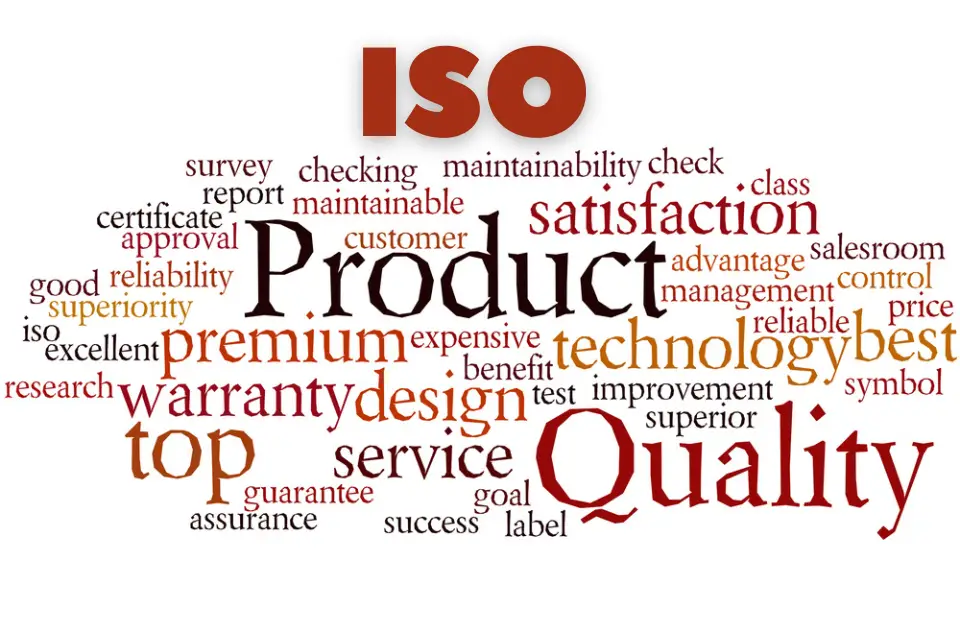ISO stands for International Organization for Standardization, an international nongovernmental organization made up of national standards bodies. Imagine a world without standardization…chaos, confusion, and inefficiency would prevail in every aspect of our lives. It plays an important role here. International Organization for Standardization makes the standards and the whole world follows these standards. International Organization for Standardization enhances quality and global harmonization. It also makes security standards, such as linking with the NSA.
The Importance of ISO

ISO, founded in 1947, is an independent, non-governmental international organization that operates through a network of national standards bodies. Its main goal is to promote trade, and innovation and maintain collaboration between various industries with the help of different effective standards.
Scope of ISO

ISO is a broad company which creates more than 24,000 international standards, covering many fields. ISO is also involved in technology, manufacturing as well as healthcare and agriculture. International Organization for Standardization develops standards that are used for quality management, environmental practices, information security, risk management, and social responsibility.
Benefits of ISO

By Following the standards of the International Organization for Standardization, we get many advantages in business and society management. Let’s see some benefits here:
1. Improve Quality
International Organization for Standardization makes standards which focus on efficiency, quality of products, services and satisfaction of customers. These standards also help in business consistency and result in superior goods and services.
2. Risk Mitigation
with the help of the International Organization for Standardization standards, any organization has effective control over risk management. They can easily identify their risks. International Organization for Standardization standards also help organizations in decision-making, reduce liability, and enhance resilience.
3. Expanded Market Access
International Organization for Standardization works internationally, so the International Organization for Standardization generates different certificates that increase credibility and trust among customers. In other words, it opens the doors to new markets.
4. Sustainability
The International Organization for Standardization has developed many standards for natural environment protection. It promotes sustainability. International Organization for Standardization encourages organizations to minimize their ecological footprint and contribute positively to the planet.
Structure and Processes involves in ISO

International Organization for Standardization works with a highly structured and democratic system. The best thing about an organization is that it ensures fair representation and equal participation from its member countries. The organization follows a three-level structure:
1. General Assembly
International Organization for Standardization is a broad organization. It has a large General Assembly consisting of qualified people from all countries. They have high decision-making skills. This team discusses policy matters, elects the International Organization for Standardization Council, and approves the organization’s budget.
2. ISO Council
It consists of 20 members, the ISO Council implements decisions made by the General Assembly. It also monitors the International Organization for Standardization’s overall strategy, finances, and activities.
3. Technical Committees
Technical committees drive the development and revision of International Organization for Standardization standards. Over 3,000 technical committees, subcommittees, and working groups composed of experts from member bodies collaborate to create and update standards.
How are standards developed?

The International Organization for Standardization standard development process is very inclusive and transparent. It consists of the following stages that are as follow:
1. Proposal
Anyone can propose or request the development of a new standard to address a specific need or challenge.
2. Preparation
After the proposal is accepted, a committee is established. They conduct extensive research and consultation to gather input (data & background) from relevant stakeholders.
3. Drafting
Once all the data is collected and reviewed by the committee, the raw standard is made. Based on the research findings, the committee makes the initial draft of the standard. This draft is reviewed, revised, and refined multiple times to ensure accuracy and relevance.
4. Committee Draft (CD)
The raw standard is shared with all members for review and comment. This stage allows for global input to ensure diverse perspectives are considered.
5. Final Draft International Standard (FDIS)
The FDIS is the refined version of the standard. In this step, we take feedback from all members. They give the final vote to ensure efficiency.
6. Publication
when the standard is approved by the voting process, it is published as an International Standard. International Organization for Standardization standards are regularly reviewed and updated to keep pace with technological advancements and market needs.
ISO’s Impact On Industries

Manufacturing and Engineering
International Organization for Standardization standards influence product design, manufacturing processes, and supply chain management. Some Standards like:
- ISO 9001 ensures quality management systems are established and maintained, benefiting both manufacturers and consumers alike.
- ISO 14001 offers guidance on environmental management systems, helping businesses minimize their environmental impact.
Healthcare
International Organization for Standardization plays a vital role in ensuring patient safety, improving healthcare delivery, and promoting innovation in the medical field. Key ISO standards include:
- ISO 13485 sets standards for quality management systems in the medical device industry, ensuring safe and reliable products.
- ISO/IEC 27001 outlines requirements for information security management systems, protecting sensitive patient data from breaches.
Information Technology
The IT sector heavily relies on International Organization for Standardization standards to align with international best practices. Some essential standards include:
- ISO/IEC 27001 assists organizations in safeguarding information assets and managing risks related to data security.
- ISO/IEC 20000 provides a framework for IT service management, enhancing service quality and customer satisfaction.
Conclusion
The International Organization for Standards is an international standards-developing authority. It changes the world with its effective standards. it plays an important role in businesses and societies. It manages trade, and security measures and drives innovations. In simple words any organization or industry that wants to become successful must follow the standards of ISO otherwise they will fail to manage things.
Frequently Asked Questions on International Organization for Standardization
How does ISO develop standards?
ISO develops standards through a consensus-based process involving input from experts, industry stakeholders, government agencies, and consumer representatives. Standards are reviewed and revised regularly to reflect changes in technology, industry practices, and societal needs.
What are the benefits of implementing ISO standards?
Implementing ISO standards can lead to improved product quality, increased customer satisfaction, enhanced efficiency and productivity, reduced costs, better risk management, and increased market access and competitiveness.
What industries does ISO cover?
ISO covers a wide range of industries and sectors, including manufacturing, healthcare, automotive, aerospace, food and agriculture, information technology, energy, environmental management, and social responsibility.
Are ISO standards mandatory?
ISO standards are voluntary, meaning organizations can choose whether or not to adopt them. However, many organizations choose to implement ISO standards to demonstrate their commitment to quality and to gain a competitive edge in the global marketplace.
How can organizations access ISO standards?
Organizations can access ISO standards through their national standards bodies or directly from the ISO website. Standards are available for purchase in various formats, including printed copies, electronic documents, and online subscriptions.





